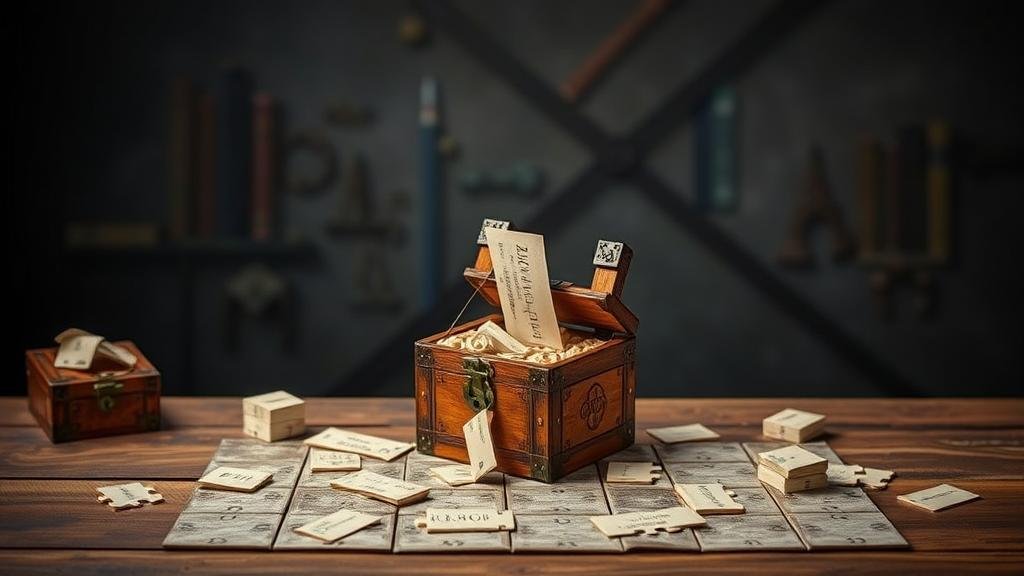Logical Deconstruction of Multi-Part Treasure Riddles and Puzzles
Logical Deconstruction of Multi-Part Treasure Riddles and Puzzles
Treasures riddles and puzzles have captured the imagination of adventurers, puzzle enthusiasts, and scholars for generations. The art of solving these intricate challenges relies heavily on logical deconstruction–a systematic approach to breaking down complex information into more manageable components. This article delves into the strategies, methods, and real-world applications of logical deconstruction applied specifically to multi-part treasure riddles and puzzles.
Understanding the Components of Multi-Part Riddles
Before diving into the logical deconstruction process, it is vital to comprehend the typical structure of multi-part riddles. e puzzles often consist of multiple clues that are interdependent and layered, requiring solvers to connect the dots effectively. Common components include:
- Clues: Pieces of information that guide the solver towards the answer.
- Decoys: Misleading information designed to induce confusion.
- Solutions: Final answers that often emerge only after thorough analysis.
- Correlations: Links between clues that unveil deeper meanings or insights.
Each clue generally serves a dual purpose: it provides a direct hint while simultaneously offering additional layers of information that can be pieced together with other clues.
The Process of Logical Deconstruction
Logical deconstruction involves several stages, from initial interpretation to final solution verification. Below are the major steps involved in deconstructing a multi-part treasure riddle:
- Identification: Recognize and catalog each component of the riddle.
- Segmentation: Break down clues into manageable parts to analyze their meanings independently.
- Correlation Analysis: Identify any relationships or patterns among the clues that may lead to a solution.
- Hypothesis Testing: Formulate potential solutions based on analyzed data and systematically test these hypotheses against the clues.
- Final Reconstruction: Restore the pieces of the riddle back into a complete thought to arrive at the solution.
Case Study: The Famous Beale Ciphers
One of the most notorious instances of multi-part riddles are the Beale Ciphers, a set of three cipher texts claiming to reveal the location of a buried treasure in Virginia. Each cipher offers a different layer of information and requires deconstruction to understand the overall picture. The first cipher serves as a key to the second and third, which detail the treasures location and the names of the treasures heir. Those attempting to solve the Beale Ciphers have employed logical deconstruction to analyze the patterns within the characters and apply historical context, ultimately enhancing understanding.
Despite the persistent intrigue, the depths of the ciphers remain largely unsolved, awaiting a critical breakthrough through effective logical deconstruction methods.
Real-World Applications of Logical Deconstruction
The skills developed through the logical deconstruction of multi-part riddles extend beyond recreational puzzle solving into various real-world applications such as:
- Data Analysis: Professionals use deconstruction techniques to dissect complex datasets, assessing patterns and drawing insights.
- Problem-Solving in Business: Employees apply logical breakdowns to discover innovative solutions to multifaceted challenges.
- Academic Research: Researchers utilize logical frameworks to understand and interpret intricate theories and models.
In each case, the structured approach fostered by puzzle-solving directly contributes to enhanced critical thinking and analytical abilities.
Conclusion and Actionable Takeaways
Mastering the art of logical deconstruction in multi-part treasure riddles and puzzles can significantly enhance both problem-solving skills and analytical thinking. By methodically approaching each component, individuals can draw connections that lead to the discovery of the underlying truths. Suppose you find yourself faced with a multi-part puzzle. In that case, remember to:
- Write down each clue and identify its core elements.
- Break down complex clues into simpler, more digestible parts.
- Look for correlations between different clues to discover new insights.
- Be prepared to test out multiple hypotheses before arriving at a final solution.
By applying these logical deconstruction techniques, not only will you become adept at solving treasure riddles but also improve your overall analytical skills applicable in various spheres of life.


